Houses for pigs should be designed to ensure optimum growth comfort and prevent dampness. A farm system used to house pigs depends on the prevailing conditions in that area, as well as the financial situation of the farmer in that area, and this system varies from one place to another.
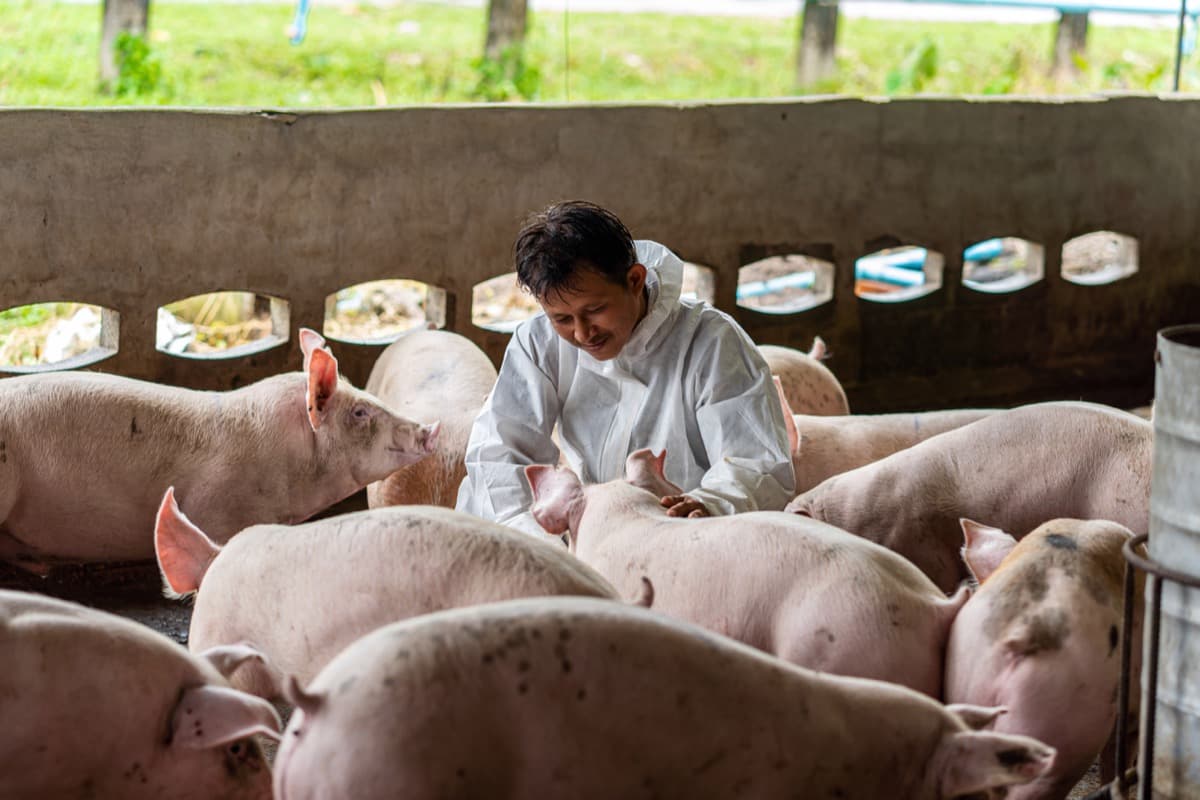
As far as possible, the housing system should be designed to put as little strain on the land as possible, and it can be either intensive, semi-intensive, or extensive, depending on the land conditions. Because of differing soil and climate conditions, the layout and style of pig housing vary from one area to another.
How to build a low-cost Pig house
Pig house siting and preliminary considerations
- The site chosen to dispose of effluents should be well-drained and dry, enabling effluents to be disposed of effectively.
- Pig buildings are normally built downslope to facilitate the drainage and disposal of effluents. However, this should be avoided if possible.
- A building should be positioned so that other buildings are not obstructing air flow from the building.
- A site should be accessible to vehicles, and other transportation means to deliver feeds and animals, pick up pigs to be slaughtered, and dispose of effluent properly at the site.
- Buildings must not be located in areas with a high traffic level to minimize noise pollution.
- Buildings that will be constructed near a good supply of fresh water, clean, and constant should be built on the site.
- The pig houses should be placed in such a location that they are protected from extreme sun rays, rain, and wind draughts. In addition, it would be most beneficial if the building were placed so that the longest side of the building runs from the east to the west, thereby eliminating most of these problems.
- The ground temperature will be lower because the ground will be shaded for a greater part of the day under this orientation. Therefore, planting large evergreen trees around the house is important to provide shade and act as a windbreak.
- A suitable plan must be drawn up for the house, and the house size should be determined before the construction of the house can begin.
- As far as the house itself is concerned, it should be well-ventilated, easy to clean and have plenty of sunlight. If pig houses are constructed with open sides, which may be covered with screens or protected with iron protectors, they will provide ample ventilation for the pigs.
- The house should be built on a solid foundation, have a roof that provides plenty of shade and protection, and have a good foundation.
- It is important for pig houses to be properly spaced and to be located away from animal houses and abattoirs.
In case you missed it: How to Make Corn Silage: Production and Management Steps for Goats, Sheep, Cows, Pigs, and Cattle
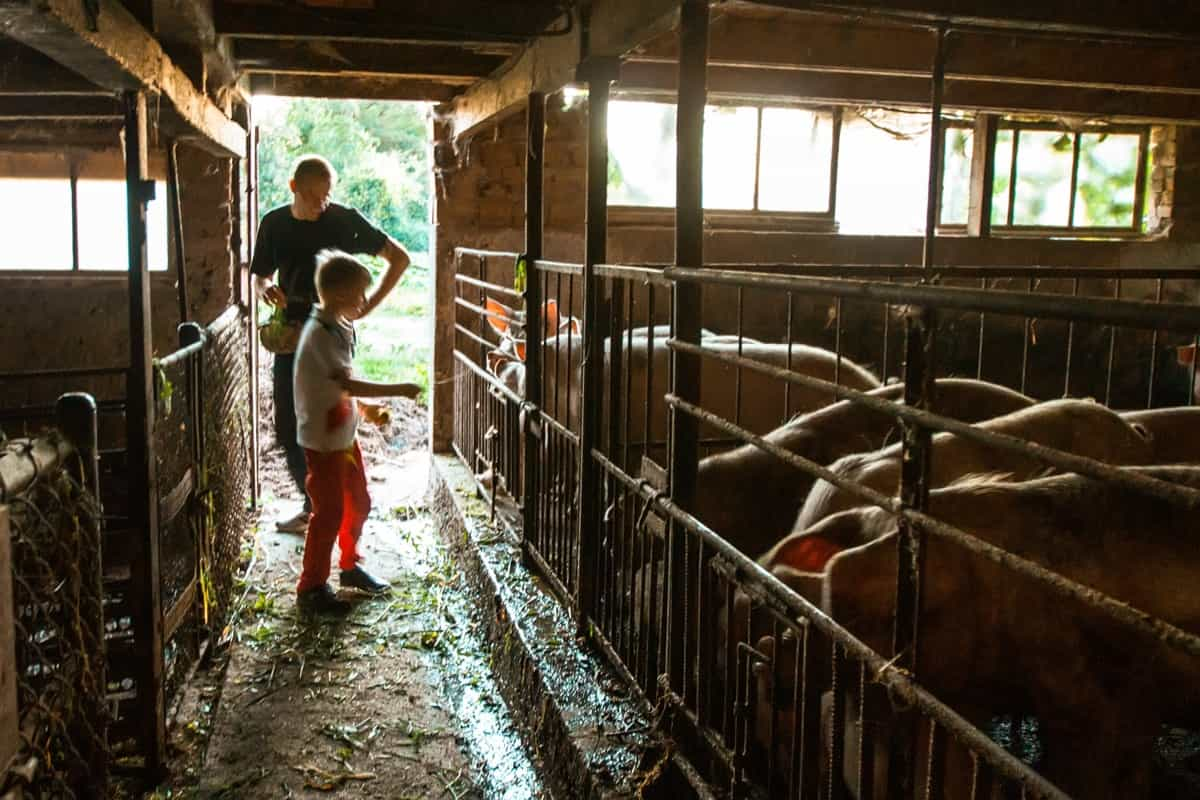
Low-cost pig house varieties
Pigs need a place to sleep that is warm and protected from the elements. They do not need to be elaborate or large, and pigs like to snuggle up with one another when they sleep and don’t mind being a bit crowded in their shelter. Be sure to provide ventilation and airflow inside any enclosed livestock space. Always provide bedding in straw or another soft material to help keep the pigs warm and dry. Some options for a pig shelter include:
Barn
A barn with access to an outdoor fencing enclosure is ideal for pigs. Barns are especially beneficial when running a larger farming operation or breeding so that boars can be separated from sows and piglets. Young piglets also need a heated space in the cold winter months.
Straw bale house
Straw bales can be stacked in a brick pattern to create a 3-sided structure in minutes. The straw bales need to be secured with wire fencing or metal t-posts to protect them from the weight of the pig’s bodies. Then it just needs a roof. This can be as simple as placing 2×4’s over the top with a tarp stretched over, or it could be a framed rectangle with metal sheeting attached.
This type of housing is temporary and won’t last more than a single season. (Do not place this type of house next to your perimeter fence. If the pigs start to destroy their walls, they can create stairs out of the straw and jump the fence.
In case you missed it: How to Start Pig Farming in Brazil: Business Plan, Cost, Profits, Breeds, Care, and Management
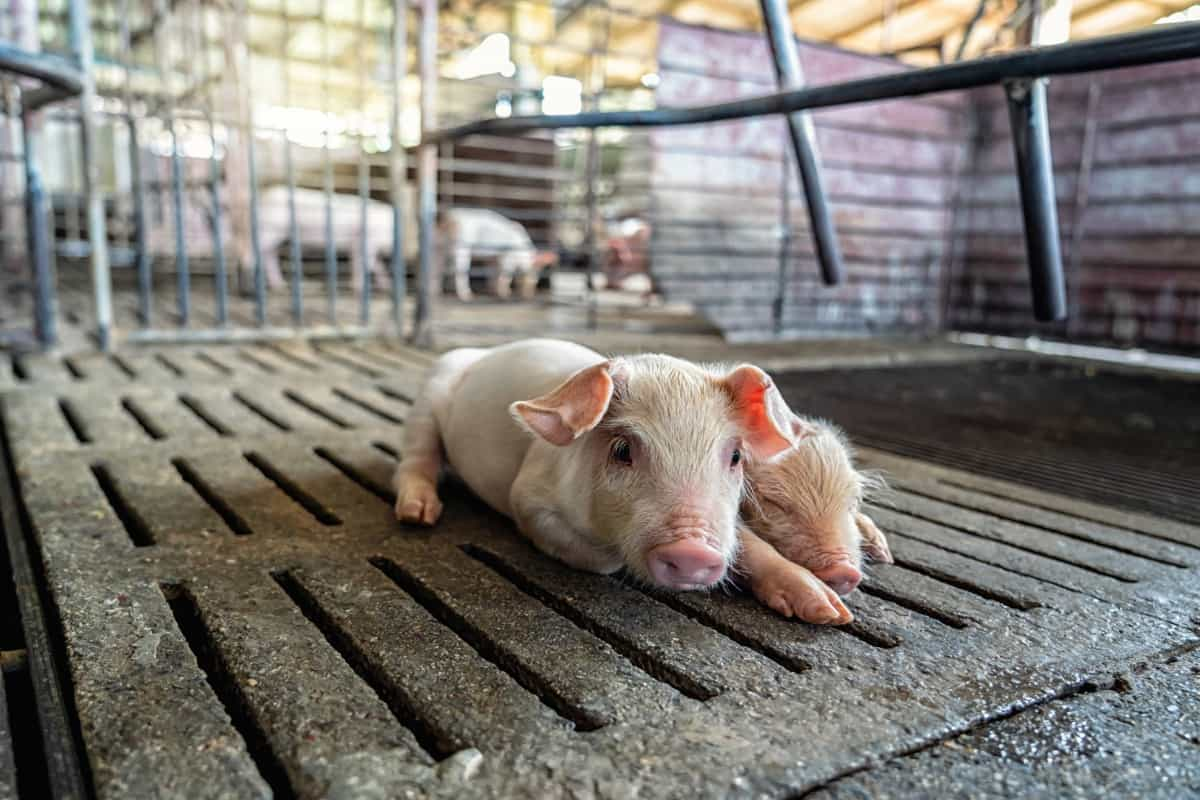
Log cabin
If you have wooded land and ax or chainsaw skills, you don’t need to go to the store to buy materials for your pig’s shelter. Like Lincoln logs, you can build a shelter out of tree trunks/branches by cutting notches on the edges. The logs could also be constructed vertically with a few horizontal pieces attached for stability.
Tunnel house
These structures are shaped like an arch, similar to a greenhouse. They are inexpensive and easy to construct in large quantities. Hog panels can be bent in an arch shape and covered with metal or even a simple tarp for a more temporary structure.
Farrowing house
Farrowing is the process of breeding and birthing a litter of piglets. A farrowing house will contain only sow’s and their litters. Therefore, they must have ample ventilation to heat and cool the structure. The floors should be cement or another material that is easy to clean and disinfect to prevent the spread of disease. They also need appropriate bars along the bottom edge that prevent the sow from lying on and crushing the piglets. The bar should be adjustable or high enough that only small piglets can fit under it.
Wooden pen
A wooden pen is among the low-budget pig pens you can make because wood is very accessible. You can find them lying in your home, workshop, or area. For this amazing pigpen, you need two kinds of wood; for the sidewalls, you need bamboo and wood. For the floor, you need stone chips, sand, and cement. However, to keep the floor warm and safe for the pigs, you need additional layers of materials that will cover the surface of the cement.
In case you missed it: Key Rules to Improve Feed Conversion Ratio (FCR) in Pigs: For Better Profits in Pig Farming
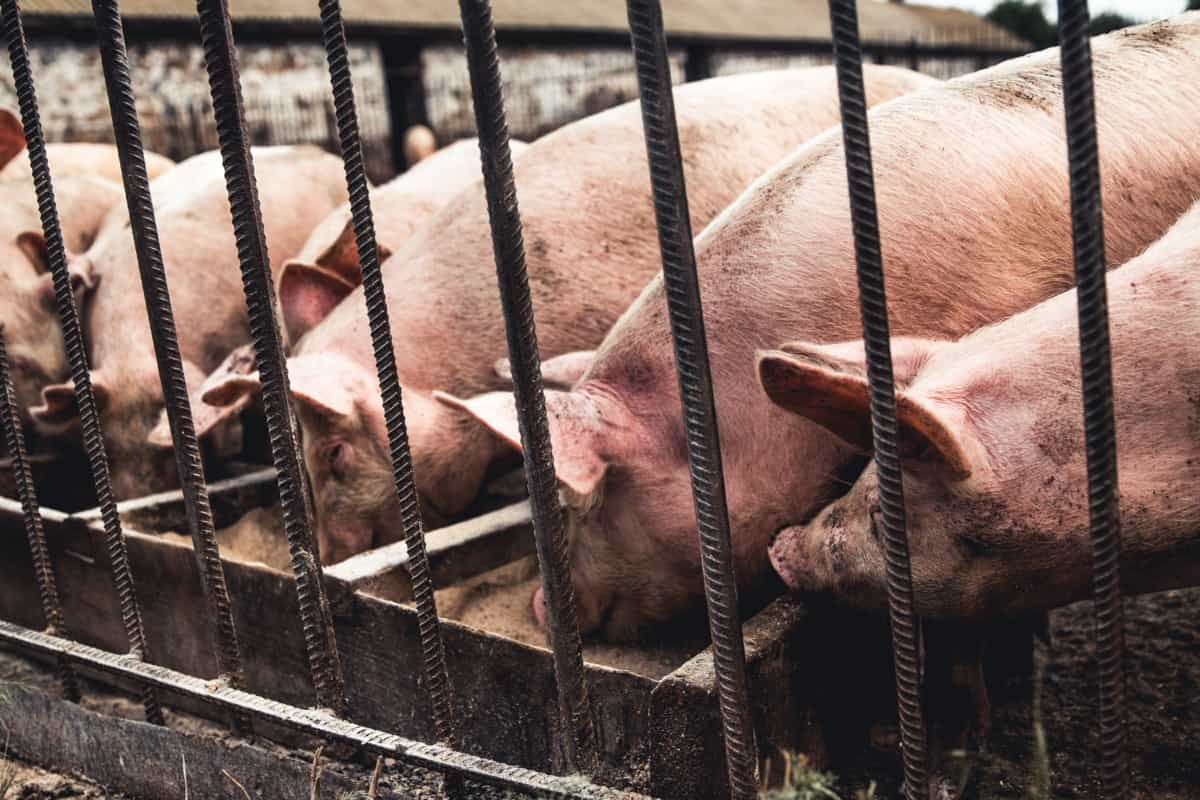
Factors need to be considered while constructing a Pig House
Building a pig house is quite a task. Especially if you do not have much experience building pens. Besides, pens built by amateurs usually fall apart after some time. That’s why it’s important to understand that the success of your pen will depend upon many factors like your abilities, tools, materials you use, etc.
Exactly like any other type of animal enclosure, pig houses are designed to provide each animal with the space, shelter, food, and water they require to be happy and healthy so that they can thrive. The size, the materials, the shelter, the access to food and water, and the space for the pigs to wallow must all be considered when building your DIY pig pen.
Size
The number of pigs living in the pigpen should be specified. It is generally recommended that each animal has an area of 8 x 16 feet, although this may vary by breed and the size they reach. Plan for 2-3 more animals than the number in your herd to ensure your animals have enough space.
Materials
Pig pens must be constructed of sturdy materials that are durable enough to withstand their activities. A pig scratched against a fence post, reached through a hole, touched something on the other side, and chewed on any available wood. Wire mesh must be used to cover any wood posts accessible to the pigs so they can’t chew on them. The posts made of metal are generally heavier and more durable than wood, but they are also more expensive. Metal posts should be anchored at least two feet deep by being at least 6 feet tall. It is best to use hog panels for DIY fences.
In case you missed it: How to Start Pig Farming in Israel: Breeds, Business Plan, Key Rules, Setup Cost, and Profit
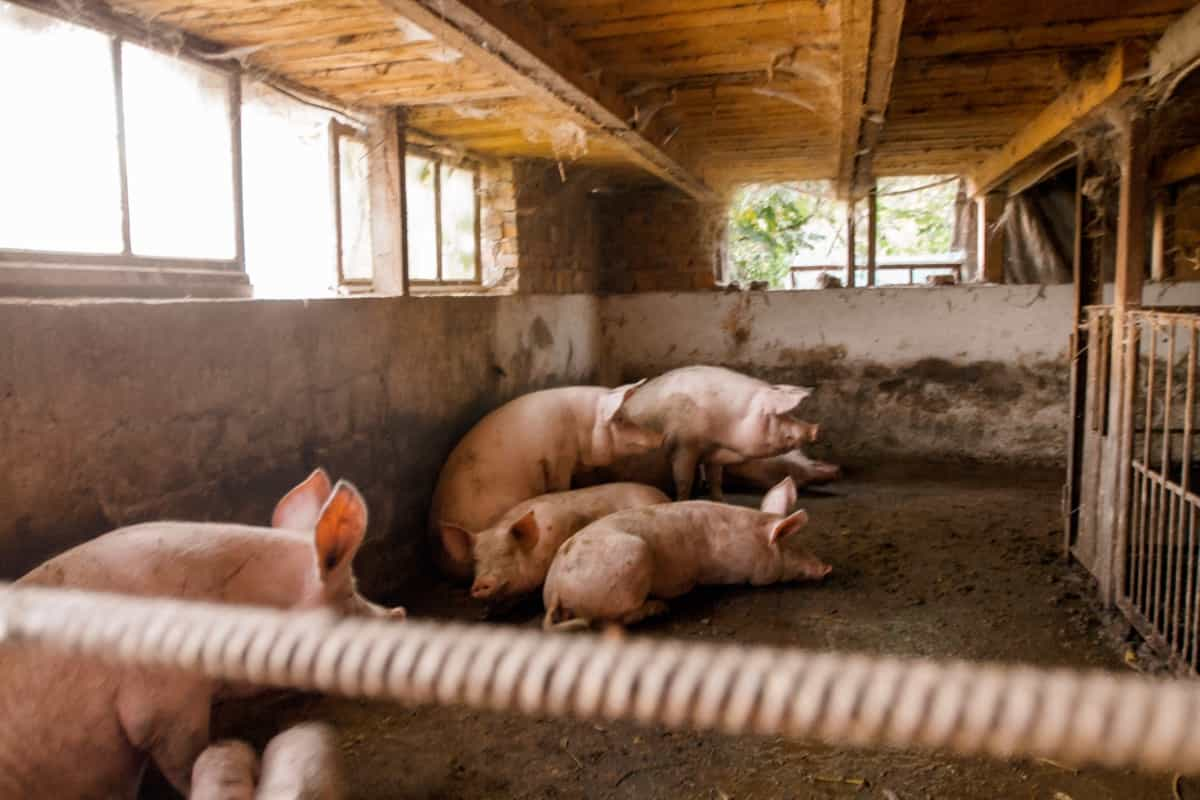
Shelter
Pigs need a covered, impervious space within the pig pen to stay warm and dry. The shelter doesn’t need to be very tall, 4 feet is sufficient for most breeds, but the footprint must be spacious enough for all animals to get out of bad weather. The walls of DIY pig pens are typically made of wire mesh, plywood, fiberglass insulation, another plywood layer, and then a final layer of wire mesh. Finally, a roof covers the structure.
Food and water access
A top-filling and automatic feeder is the best because it stores large amounts of food but allows only a small amount to be available at a given time. In this way, waste and mess can be avoided. There are also automatic waterers available, but they require water hose connections.
Tools & materials for building a Pigpen
| Tools | Materials |
| Metal posts at least 6 feet tall | DrillHand or circular saw |
| Hog panels | Hammer Pencil |
| Plywood sheets | Measuring tape |
| Fiberglass insulation | Sandpaper |
| Wire mesh sheeting | Staple gun |
| Wood screws | Work gloves |
| Nails | protective goggles |
| Roofing sheet | Level |
| Screws | Shovel |
| Top-filling, | |
| Automatic feeder | |
| Automatic waterer | |
| Water hose | |
| Cement |
In case you missed it: Key Rules to Improve Feed Conversion Ratio (FCR) in Sheep: For Profitable Sheep Farming
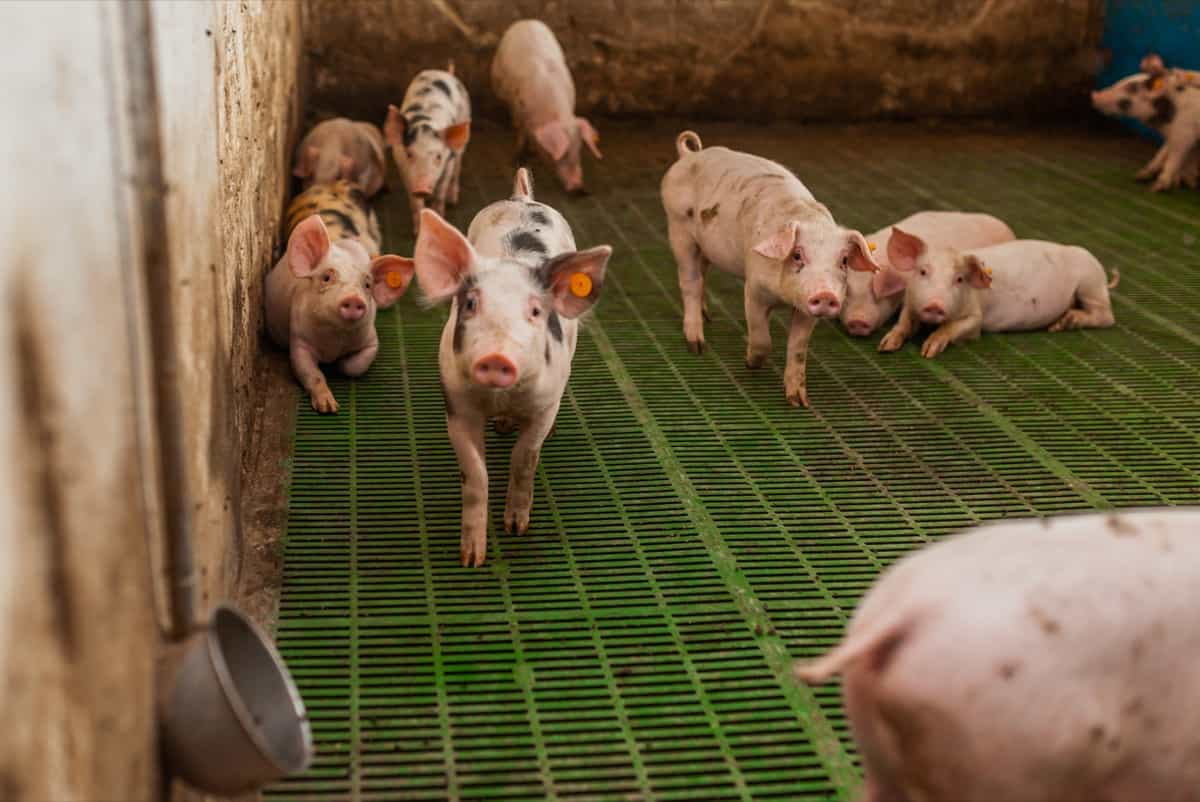
Steps in building a DIY Pig House
While DIY pig houses come in a few different shapes and sizes, a few critical steps are involved in building a basic, sturdy pig house.
- Your first step should be to select or create your design. Next, take note of all necessary tools and materials, as well as the number of materials needed.
- As a second step, you will need to obtain all the tools and materials for the project.
- Make sure your metal posts are buried in the ground by digging holes. Then, fill the holes with dirt, gravel, or cement after the posts have been positioned inside the holes.
- Ensure the hog panels are connected to the posts to create an enclosed space.
- The building’s plywood, insulation, and wire mesh will need to be cut as soon as the shelter construction is ready.
- The wall panels should be assembled and attached to the metal posts.
- After the sides are erected, the roof can be added.
- As a final step, provide your pigs with a new shelter where they can play, wallow, feed, water, and be protected from the elements.
In case you missed it: Poultry Farming in Israel: Key Rules, Business Plan, Breeds, Cost, and Profit
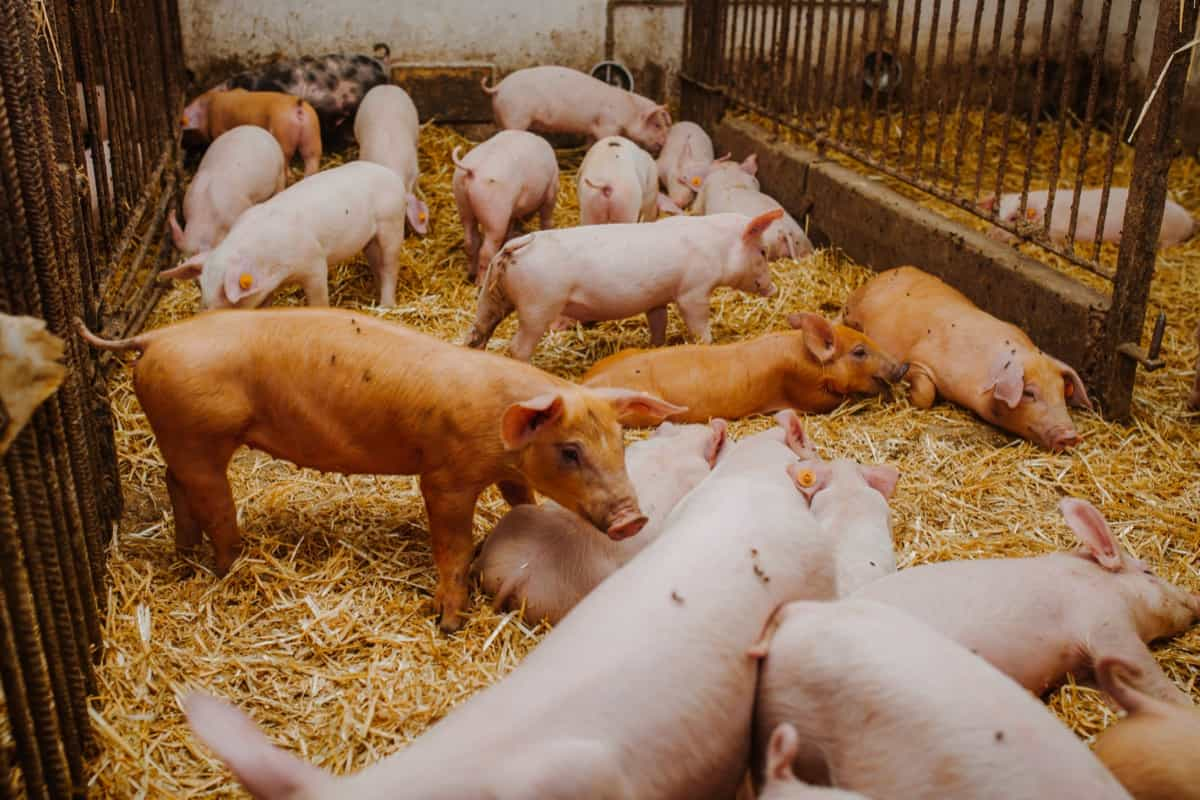
Advantages of pig rearing
- Pigs produce valuable nutritious meat by converting inedible feeds, forages, grains from mills, meat byproducts, damaged feeds, and garbage into edible food. Unfortunately, the majority of these feeds are either not edible or not very palatable to humans.
- Pigs grow rapidly and are prolific breeders, producing 10-12 piglets at a time. A sow can produce two litters per year under optimal management conditions.
- Pig-rearing returns are high. A farmer can profitably use his time and labor in this subsidiary occupation by investing in building and equipment, feeding the pigs correctly, and implementing a good disease control program. In addition, pigs’ feces are used as manure to maintain soil fertility.
- There is no meat-producing animal except the broiler with a higher feed conversion efficiency than the pig, which produces more live weight gain from a given feed weight.
- The pig can consume a variety of feedstuffs, including grains, forages, damaged feeds, and garbage, and produce nutritious meat from them. However, the feed efficiency may suffer when damaged grains, garbage, and other unbalanced rations are fed.
- The generation intervals are shorter, and they are prolific. There is no limit to how early a sow can breed and how many times a sow can farrow in a year. They produce 6-12 piglets in each farrowing.
- Buildings and equipment needed for pig farming are relatively inexpensive.
- The dressing percentage of pigs ranges from 65 – 80 compared to other livestock species, whose dressing percentages may not exceed 65%.
- Compared to other meats, pork has the highest fat, lowest water content, and higher energy content. Furthermore, it contains vitamins such as thiamin, Niacin, and riboflavin.
- Pig manure is widely used as fertilizer in agriculture and fish ponds.
- The poultry feed, soap, paints, and other chemical industries require more fat from pigs because they store it rapidly.
- Fatteners can reach a marketable weight in 6-8 months, so pig farming provides quick returns.
- Pig products such as pork, bacon, sausages, lard, etc., are in high demand domestically and abroad.
In case you missed it: How This Farmer Earned 5 Lakhs from Fish and Prawn Mixed Farming: A Success Story of an Aqua Farmer in India
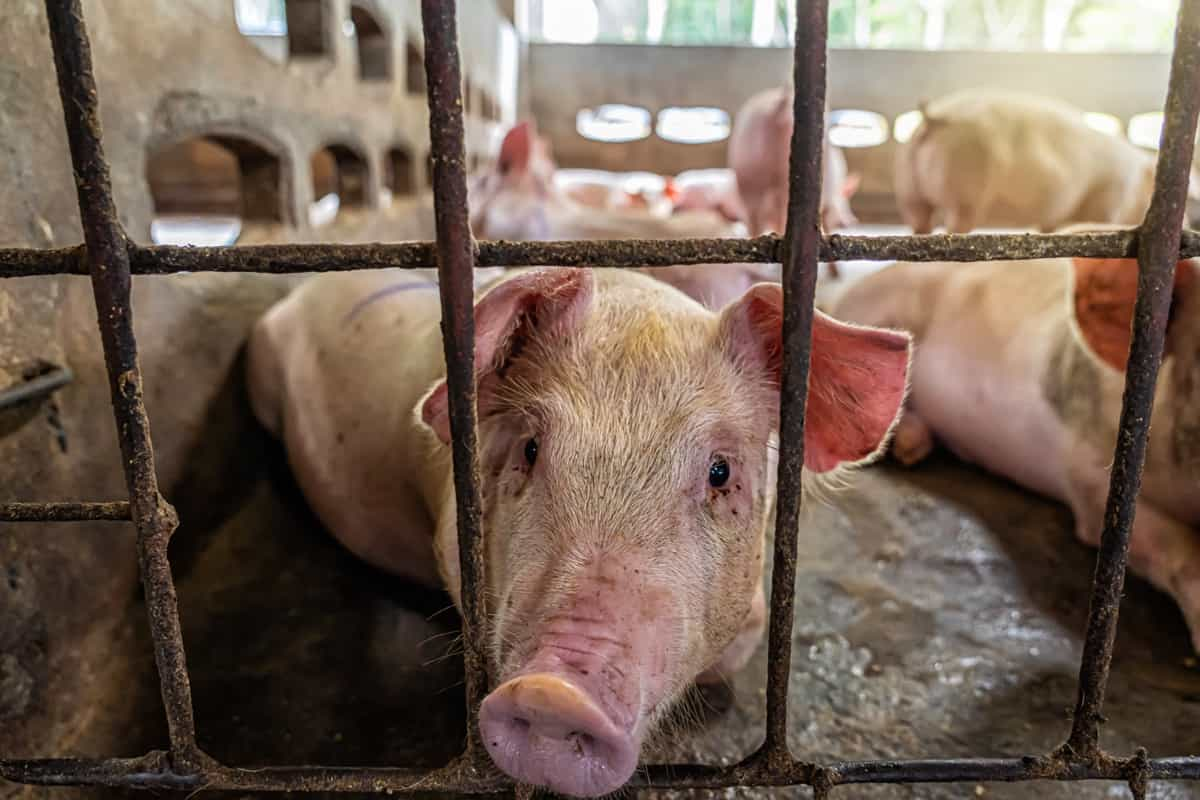
Conclusion
Among the most profitable occupations for farmers, pig farming is one of the most profitable. A minimum amount of capital investment is required, as well as a minimum amount of labor. In terms of return on investment, the investment pays off quickly and is of high quality. The maturation of piglings occurs within a very short period, usually less than three months.
- Types of Pesticides Used in Agriculture: A Beginner’s Guide
- Economical Aquaculture: A Guide to Low-Budget Fish Farming
- 15 Common Planting Errors That Can Doom Your Fruit Trees
- How to Make Houseplants Bushy: Effective Tips and Ideas
- Innovative Strategies for Boosting Coconut Pollination and Yield
- Pollination Strategies for Maximum Pumpkin Yield
- The Complete Guide to Chicken Fattening: Strategies for Maximum Growth
- Natural Solutions for Tulip Problems: 100% Effective Remedies for Leaf and Bulb-Related Issues
- Revolutionizing Citrus Preservation: Towards a Healthier, Greener Future
- Natural Solutions for Peony Leaf and Flower Problems: 100% Effective Remedies
- Maximizing Profits with Avocado Contract Farming in India: A Comprehensive Guide
- Natural Solutions for Hydrangea Problems: 100% Effective Remedies for Leaf and Flowers
- The Ultimate Guide to Choosing the Perfect Foliage Friend: Bringing Life Indoors
- From Sunlight to Sustainability: 15 Ways to Use Solar Technology in Agriculture
- The Ultimate Guide to Dong Tao Chicken: Exploring from History to Raising
- The Eco-Friendly Makeover: How to Convert Your Unused Swimming Pool into a Fish Pond
- Mastering the Art of Delaware Chicken Farming: Essentials for Healthy Backyard Flocks
- 20 Best Homemade Fertilizers for Money Plant: DIY Recipes and Application Methods
- How to Craft a Comprehensive Free-Range Chicken Farming Business Plan
- Brighten Your Flock: Raising Easter Egger Chickens for Beauty and Bounty
- How to Optimize Your Poultry Egg Farm Business Plan with These Strategies
- Subsidy for Spirulina Cultivation: How Indian Government Schemes Encouraging Spirulina Farmers
- Ultimate Guide to Raising Dominique Chickens: Breeding, Feeding, Egg-Production, and Care
- Mastering the Art of Raising Jersey Giant Chickens: Care, Feeding, and More
- Ultimate Guide to Raising Legbar Chickens: Breeding, Farming Practices, Diet, Egg-Production
- How to Raise Welsummer Chickens: A Comprehensive Guide for Beginners
- How to Protect Indoor Plants in Winter: A Comprehensive Guide
- Ultimate Guide to Grow Bag Gardening: Tips, Tricks, and Planting Ideas for Urban Gardeners
- Guide to Lotus Cultivation: How to Propagate, Plant, Grow, Care, Cost, and Profit
- Agriculture Drone Subsidy Scheme: Government Kisan Subsidy, License, and How to Apply Online
- Ultimate Guide to Raising Araucana Chickens: Breed Profile, Farming Economics, Diet, and Care
- Bringing Hydroponics to Classroom: Importance, Benefits of Learning for School Students
- Ultimate Guide to Raising Polish Chickens: Breed Profile, Farming Economics, Diet, and Care
- Ultimate Guide to Raising Australorp Chickens: Profile, Farming Economics, Egg Production, Diet, and Care
- Silkie Chicken Farming: Raising Practices, Varieties, Egg Production, Diet, and Care
- Sussex Chicken Farming: Raising Practices, Varieties, Egg Production, Diet and Care